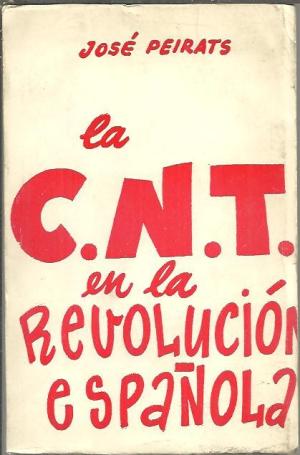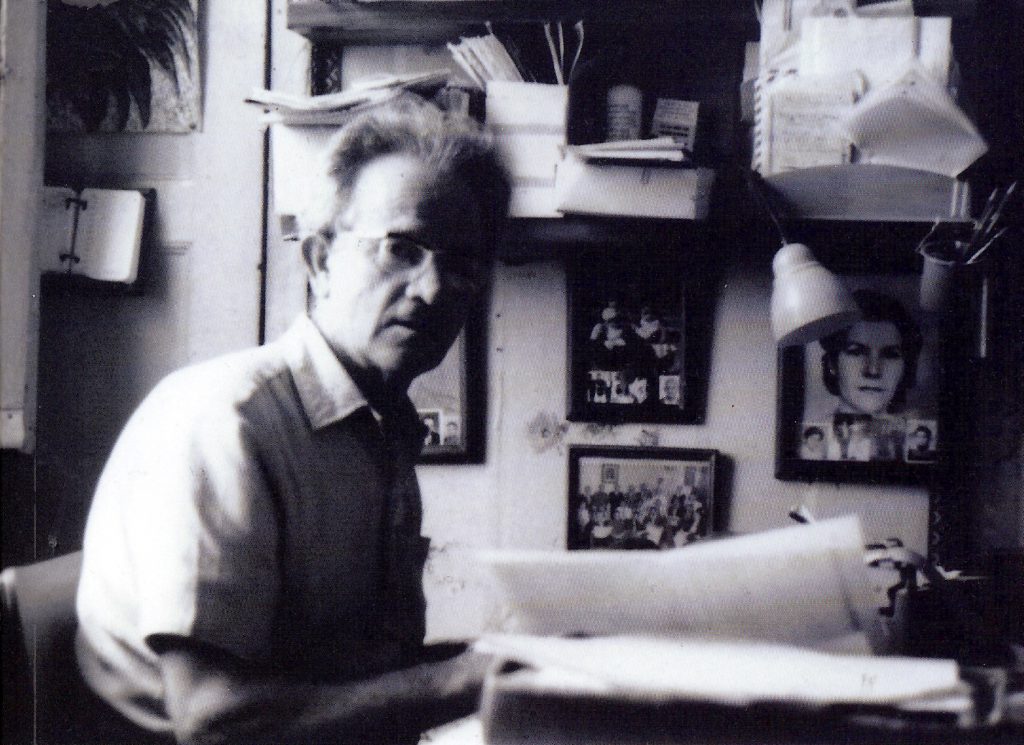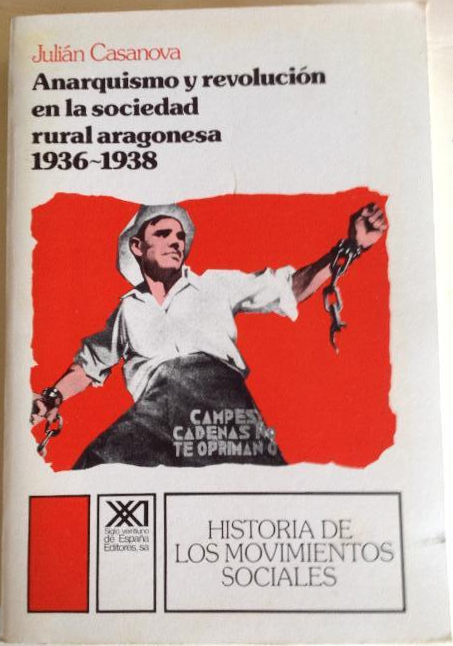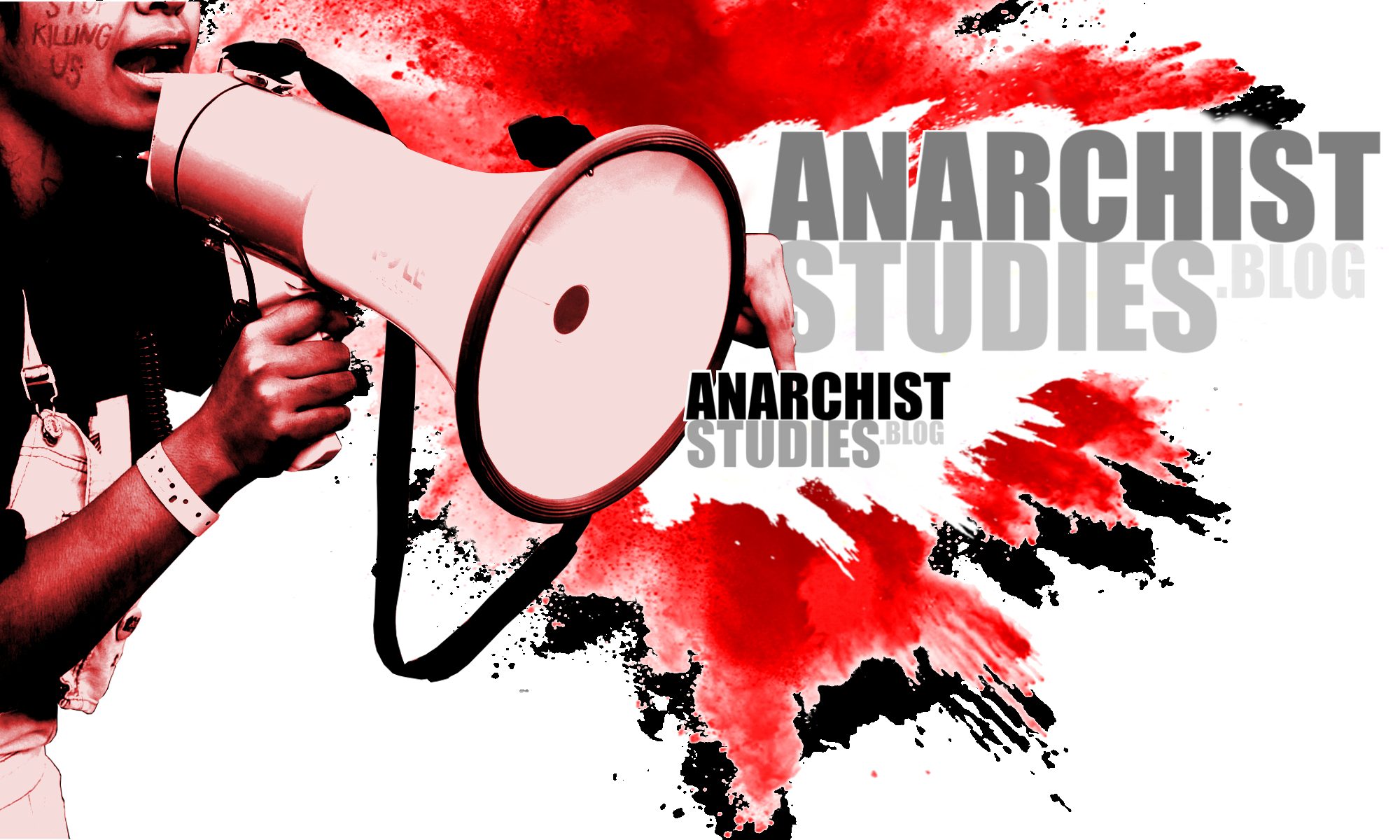by Morris Brodie
5th February 2019
Until relatively recently, there has been little scholarly attention paid to the anarchist contribution to the Spanish Civil War in a positive sense. Anyone who has read general histories of the civil war period will be familiar with the trope of the anarchists in Spain either as hopelessly idealistic dreamers or, paradoxically, as bloodthirsty butchers whose only real input on the course of the war was to sow terror in the rearguard.

These caricatures were of course never wholly representative of the scholarship on the anarchists in Spain, but they maintained a certain mythical quality for a number of decades after the war’s end in 1939. In the last twenty or so years, however, there has been something of an ‘anarchist renaissance’ in civil war historiography, with increased attention paid to their contribution from both anarchists and non-anarchists. This article[1] will seek to give a (necessarily curtailed and imperfect) summary of the main trends in anarchist historiography on the civil war from its end until the present day.
Immediately after the Republican defeat in 1939 there were few ‘mainstream’ academic histories that sought to defend the anarchists in Spain or to assess their behaviour with any real depth. Francoist historians portrayed the Confederación Nacional del Trabajo (National Confederation of Labour, CNT) and Federación Anarquista Ibérica (Iberian Anarchist Federation, FAI) as essentially evil due to their anticlericalism, symbolised by the widespread murder of clerical figures and burning of churches in areas controlled by anarchists. They also made little attempt to differentiate between the different Republican groupings e.g. left republicans, communists, socialists, anarchists, and Catalan and Basque nationalists. For Franco and his defenders, Reds were Reds.
Liberal and Republican histories attempted to defend the democratic nature of the Second Spanish Republic and to downplay the extent of the achievements of the anarchists and other revolutionaries, such as the Partido Obrero de Unificación Marxista (Workers’ Party of Marxist Unification, POUM) and the left wing of the Unión General de Trabajadores (General Workers’ Union, UGT). The anti-revolutionary tendencies within the Popular Front condemned these revolutionary experiments (characterised by the collectivisation of land and factories, workers’ control of industry, and the preponderance of revolutionary militias over the traditional Republican Army) as counterproductive (or treacherous) in the ultimate fight against fascism. The Cold War was an important backdrop in these polemics, with those critical of the Republic keen to paint it as a satellite state of the Soviet Union (the USSR gave limited aid to the Republic during the period). Those favourable to the Republican cause were loath to acknowledge the existence of a robust revolutionary movement committed to the ultimate overthrow of the state and of capitalism.
There were some favourable interpretations of the anarchist role, such as George Orwell and Gerald Brenan, but these were few and far between, and in general anarchists saw it as their duty to defend themselves against the slanders of their erstwhile comrades in the Popular Front. Activists became the primary historians of the movement, and each sought to justify their own behaviour during the civil war period. The leading anarchist historian after 1939 was José Peirats, a vocal critic of the official CNT-FAI line and activist in the Libertarian Youth of Catalonia during the civil war. In exile in France, he began work on a history of the revolution, which was published in 3 volumes between 1951 and 1953.

Peirats was straightforward about what his finished product, La CNT en la revolución española, represented: ‘Given the wave of books already published on the civil war in which we are ignored or slandered … [he wanted] a book that would demonstrate that, as well as a civil war in Spain, there was a social revolution and that this unknown revolution was carried out by anarchists in the face of the opposition and hostility of those inside and outside their movement’.[2] Peirats and others tried to defend anarchism from outsiders, but also to criticise others in the movement for their conduct during the war – this is summarised by the debate over governmental collaboration within the movement.
When the CNT-FAI joined the Catalan regional government (Generalitat) in September 1936, followed by the central Republican government in November 1936, large parts of the anarchist movement were stunned. For the first time in history, anarchists were acting as an integral part of the very state apparatus they professed to destroy. Those in favour of governmental collaboration defended their actions as the only way to defend Spain against fascism. They highlighted the worsening international situation, with Nazi Germany and Fascist Italy supplying Franco while the so-called democracies abandoned them to their fate through the Non-Intervention Agreement, and claimed that to carry out the revolution to its logical conclusion would lead to an ‘anarchist dictatorship’. Leading collaborationist Horacio Martínez Prieto, former general secretary of the CNT, went as far as to write in his memoirs that the ‘libertarian collectives should never have been set up, being unprepared for such extraordinary circumstances’.[3]

Anti-collaborationists, by contrast, defended the spontaneous nature of the revolution, and pointed to the counterrevolutionary repression of the Republican government (particularly the Partido Comunista de España (Communist Party of Spain, PCE)) against anarchist militants as the price paid for ministerial posts. The anti-collaborationists criticised what they saw as the centralising tendencies of the CNT-FAI leadership throughout the war, and argued that a more radical line (such as granting independence to Spanish Morocco and more widespread collectivisations) could have weakened support behind Franco’s lines and won both the war and the revolution. Predictably, they called collaborationists ‘traitors’ to the anarchist ideal. Key anti-collaborationists, along with Peirats, were Diego Camacho (who wrote under the pseudonym Abel Paz) and Anglo-Italian anarchist Vernon Richards. Activist histories in the decades following defeat, then, tended to refight the battles of the civil war.

The emergence of the New Left in the 1960s witnessed an increased interest in anti-authoritarian left-wing politics and movements, sparked in part by disillusionment with orthodox communism following the Soviet invasion of Hungary in 1956. The ‘starting gun’ for many new interpretations of the anarchists in the civil war (in English at least) was Noam Chomsky’s 1969 essay ‘Objectivity and Liberal Scholarship’, in which he used the anarchist experience in Spain to condemn US foreign policy in Vietnam. Chomsky criticised what he saw as the ‘underlying elitist bias’ of liberal and orthodox communist historians who did little to disguise their ‘antipathy towards the forces of popular revolution in Spain, or their goals’.[4]
A year later, Pierre Broué and Emile Témime’s French-language study of the Spanish Revolution (a largely Trotskyist account) was published in English for the first time, and following Franco’s death in 1975 a new wave of historians began looking at anarchism both before and during the civil war. Many of these, such as the work of Walther Bernecker, attempted to take a more neutral stance towards the anarchists, and to investigate the collectives from both an economic and social perspective. Some were more critical of anarchist involvement in the war than others, but the opening of archives within Spain – and the possibility of actually publishing works within the post-Franco state – allowed a critical space for studying anarchism to emerge.
As mentioned above, in the last twenty or so years there has been a resurgence in the output and depth of anarchist studies. This could be as a result of the end of the Cold War and the collapse of communism and communist parties throughout most of the world. Indeed, the anarchist activist Barry Pateman remembered veteran British anarchist Albert Meltzer once remarking to him that ‘When the buggers [i.e. the academics] have finished with Marxism they’ll start on us’.[5] Journals such as Anarchist Studies and Perspectives on Anarchist Theory and the creation of networks such as the Anarchist Studies Network (ASN) and the North American Anarchist Studies Network (NAASN) have legitimised to some extent the study of anarchism within scholarly circles. This ‘anarchist renaissance’ extends to civil war historiography.
More recently there has been a focus away from communist repression during the civil war to that of state reconstruction and its relationship to the anarchists. Helen Graham’s influential work, which largely defends the actions of the socialist prime minister Juan Negrín, views Republican state-building and the parallel quashing of the revolutionary elements of the Popular Front (including the anarchists) as a brutal but necessary process of ‘modernisation’. Graham’s work emphasises the multi-party, cross-class nature of this process, being directed not primarily by the PCE but by all the non-revolutionary elements of the government, including, to some extent, the upper echelons of the CNT-FAI.

This is something dealt with by Danny Evans in his new book, Revolution and the State: Anarchism in the Spanish Civil War, 1936-1939, in which he charts the opposition to state collaboration within the anarchist movement. Contrary to some collaborationist apologists, he argues that it was much more widespread than hitherto suggested, and highlights the lengths to which the top-level committees of the anarchist movement went to suppress dissent through bureaucratic channels (and how close the anti-collaborationists came to changing overall policy, particularly in the FAI).

Any summary of recent anarchist historiography would be incomplete without mentioning the work of Julián Casanova, who has produced numerous works on the tensions in the anarchist movement before the civil war, anarchist violence during the civil war period, and the collectives in Aragón. Casanova has been keen to undermine the idea of Spanish exceptionalism with regards to anarchism (something echoed by Evans as well as Jim Yeoman, among others), pointing out the similarities between Spanish anarchism and other labour movements until the turn of the twentieth century. This was a theme of much earlier historiography, such as Brenan and George Woodcock, the latter of whom maintained (somewhat tongue in cheek) that the Mediterranean weather meant Spaniards were natural anarchists.

There has also been a renewed emphasis on Spanish anarchist culture, art and education, perhaps best showcased by Chris Ealham’s work on Barcelona. This complements the increased interest in the sociological base of anarchism, in line with wider Spanish historiographical trends on labour movements from the 1990s. These studies position anarchism as a social rather than political or anti-political movement. This often centres on grassroots activity or those that challenged official CNT and FAI structures, including the women’s movement, such as Martha A. Ackelsberg’s excellent work on the Mujeres Libres (Free Women).
Perhaps inevitably, given the strength of anarchism in the region and the peripheral role it played in the bulk of wartime fighting, much anarchist historiography until recently has centred on Catalonia. The exception to this regional bias was Aragón, largely due to the preponderance of the anarchist-dominated Council of Aragón in the eastern half of the region until the autumn of 1937. Now, though, there are numerous regional studies of anarchism during the war, in Andalucía, Galicia, the Basque Country and Madrid. These emphasise the conspicuous role anarchists played in other regional governments (both de facto and de jure), and suggests the historical emphasis on Catalonia and northeast Spain is misplaced. These local histories are an antidote to the idea that Spanish anarchism existed only in Catalonia, but at the same time it is important not to lose sight of the movement as a nationwide, and indeed international, phenomenon.
There has been a plethora of anarchist biographies of notable civil war figures, such as Melchor Rodríguez García, Joan Peiró i Belis, Federica Montseny and Buenaventura Durruti. These give us an insight into the motivations of various individuals during the period, although what they can tell us about the entire movement is obviously more limited.
Modern anarchist historiography has benefited from the proliferation of online sources uploaded by anarchist activists and historians, such as newspapers, books, pamphlets, and posters. Digitisation has led to the democratisation of the history of the movement, which is no longer the preserve of those (like Peirats during the 1950s) with physical access to archives. The ongoing digitisation of the CNT and FAI archives at the International Institute for Social History (IISH) in Amsterdam will only accelerate this process. There has also been a move to republish translations of primary documents and commentaries from the civil war, many of which can now be found on websites like Libcom.org or The Anarchist Library.
Despite this upsurge in anarchist civil war historiography, there is still work to be done. As Óscar Freán Hernández notes, there is still a focus to some extent on trade union structures within the movement. This is unsurprising in many ways, as the CNT was the hub for much anarchist activity, and the written record relies heavily on CNT minutes and publications. Nevertheless, greater attention to the radicalisation of the base within the movement (and an awareness of the kind of people who became attracted to the CNT during the civil war period) would be welcome. There are also surprisingly few works on the anarchist youth movement, the Federación Ibérica de Juventudes Libertarias (Iberian Federation of Libertarian Youth, FIJL). The international campaign to aid Spain during the war, made famous by the International Brigades, has been the subject of numerous monographs, but the anarchist contribution to this phenomena has also been understudied. We as historians may have started looking at the anarchists during the Spanish Civil War, but we have certainly not finished.
Bibliography and further reading
Ackelsberg, Martha A., Free Women of Spain: Anarchism and the Struggle for the Emancipation of Women (Oakland, CA, 2005)
Alexander, Robert, The Anarchists in the Spanish Civil War (2 vols, London, 1999)
Amorós, Miquel, Durruti en el laberinto (Bilbao-Barcelona, 2006)
Amorós, Miquel, La Révolution Traicionada: La verdadera historia de Balius y Los Amigos de Durruti (Barcelona, 2003)
Balcells, Albert, El anarquismo en Cataluña (Barcelona, 1973)
Bernecker, Walther, Colectividades y Revolución Social: El anarquismo en la guerra civil española, 1936-1939 (Barcelona, 1982)
Bolloten, Burnett, The Spanish Revolution: the Left and the Struggle for Power during the Civil War (Chapel Hill, NC, 1979)
Bosch Sánchez, Aurora, Ugetistas y libertarios: Guerra civil y Revolución en el País Valenciano, 1936-1939 (Valencia, 1983)
Brenan, Gerald, The Spanish Labyrinth: The Social and Political Background of the Spanish Civil War (Cambridge, 1943)
Broué, Pierre and Emile Témime, La révolution et la guerre d’Espagne (Paris, 1961), republished in English as The Revolution and the Civil War in Spain (London, 1970)
Calero Delso, Juan Pablo, El gobierno de la anarquía (Madrid, 2011)
Casanova, Julián, Anarchism, the Republic and Civil War in Spain: 1931-1939 (London, 2005)
Casanova, Julián, El sueño igualitario. Campesinado y colectivizaciones en la España republicana, 1936-1939 (Zaragoza, 1988)
Chomsky, Noam, American Power and the New Mandarins (New York, 1969)
Chomsky, Noam, On Anarchism (London, 2013)
Christie, Stuart, We, the anarchists! A study of the Iberian Anarchist Federation (FAI), 1927-1937 (Hastings, 2000)
Cleminson, Richard, Anarquismo y sexualidad en España (1900-1939) (Cádiz, 2008)
Cobo Romero, Francisco, Revolución campesina y contrarrevolución franquista en Andalucía. Conflictividad social, violencia política y represión franquista en el mundo rural andaluz, 1931-1950 (Granada, 2004)
Domingo, Alfonso, El ángel rojo. La historia de Melchor Rodríguez, el anarquista que detuvo la represión en el Madrid republicano (Córdoba, 2009)
Ealham, Chris, Class, Culture and Conflict in Barcelona, 1898-1937 (London, 2005)
Ealham, Chris, Living Anarchism: José Peirats and the Spanish Anarcho-Syndicalist Movement (Edinburgh, 2015)
Esenwein, George, ‘The Persistence of Politics: The Impact of the Cold War on Anglo-American Writings on the Spanish Civil War’, Bulletin of Spanish Studies, 91:1-2 (January-February 2014), pp 115-35
Evans, Danny and James Michael Yeoman, ‘New approaches to Spanish anarchism’, International Journal of Iberian Studies, 29:3 (2016), pp 199-204
Evans, Danny, Revolution and the State: Anarchism in the Spanish Civil War, 1936-1939 (London, 2018)
Fernández Soria, Juan Manuel, Cultura y libertad. La educación en las Juventudes Libertarias (1936-1939) (Valencia, 1996)
Freán Hernández, Óscar, ‘El anarquismo Español: Luces y sombras en la historiografía reciente sobre el movimiento libertario’, Ayer, 84:4 (2011), pp 209–23
Garau Rolandi, Miguel, Joan Peiró i Belis (Valls, 2011)
García Oliver, Juan, El eco de los pasos (Barcelona, 1978)
Godicheau, François, La Guerre d’Espagne: République et revolution en Catalogne (1936-1939) (Paris, 2004)
Graham, Helen, The Spanish Republic at War, 1936-1939 (Cambridge, 2002)
Guillamon, Agustín, Barricadas de Barcelona: La CNT de la victoria de Julio de 1936 a la necesaria derrota de Mayo de 1937 (Barcelona, 2007)
Kelsey, Graham, Anarchosyndicalism, Libertarian Communism and the State: the CNT in Zaragoza and Aragón, 1930-1937 (Dordrecht, 1991)
Lozano Domingo, Irene, Federica Montseny. Una anarquista en el poder (Madrid, 2004)
Marín Silvestre, Dolors, Ministros anarquistas. La CNT en el gobierno de la 11a República (1936-1939) (Barcelona, 2005)
Martín Nieto, Isaac, ‘De la clase obrera a la acción colectiva. La historiografía sobre el movimiento libertario durante la Segunda República y la Guerra Civil’, Historia Social, 73 (2012), pp 145-171
Martínez Lorenzo, César, Les anarchistes espagnols et le pouvoir, 1869-1969 (Paris, 1969)
Martínez Prieto, Horacio, Posibilismo libertario (Choisy-le-Roi, 1966)
Mintz, Frank, L’autogestion dans l’Espagne Révolutionnaire (Paris, 1970), republished in English as Anarchism and Workers’ Self-Management in Revolutionary Spain (Oakland, CA, 2013)
Monjo, Anna and Carme Vega, Els treballadors i la Guerra civil (Barcelona, 1986)
Orwell, George, Homage to Catalonia (London, 1938)
Pagès i Blanch, Pelai, Cataluña en guerra y en revolución (1936-1939) (Sevilla, 2007)
Pateman, Barry, ‘Anarchist history: confessions of an awkward pupil’, Libcom.org (https://libcom.org/library/anarchist-history-confessions-awkward-pupil-barry-pateman) (Accessed 30 January 2019)
Paz, Abel (Diego Camacho), Durruti: le peuple en armes (Paris, 1972)
Peirats, José, La CNT en la revolución española (3 vols, Toulouse, 1951-3), republished in English as The CNT in the Spanish Revolution (3 vols, Hastings, 2001)
Pozo González, Josep Antoni, Poder legal y poder real en la Cataluña revolucionaria de 1936 (Sevilla, 2012)
Preston, Paul, The Spanish Civil War: Reaction, Revolution and Revenge (London, 2006)
Richards, Vernon, Lessons of the Spanish Revolution (London, 1953)
Sans Sicart, Joan, El dia de les sirenes. El triomf anarquista del 19 de juliol de 1936 (Lleida, 2007)
Velasco Núñez, Alfredo, La Gesta traicionada. Los anarquistas vascos y la Guerra Civil en Euskal Herriak (julio 1936-junio 1937) (Bilbao, 2011)
Woodcock, George, Anarchism: A History of Libertarian Ideas and Movements (Cleveland, OH, 1962)
[1] This blog article is an adaptation of a paper given at a symposium on civil wars organised by the Centre for Public History at Queen’s University Belfast on 30 November 2018.
[2] Chris Ealham, Living Anarchism: José Peirats and the Spanish Anarcho-Syndicalist Movement (Edinburgh, 2015), p. 154.
[3] Horacio Martínez Prieto, Posibilismo libertario (Choisy-le-Roi, 1966), p. 75.
[4] Noam Chomsky, On Anarchism (London, 2013), p. 48.
[5] Barry Pateman, ‘Anarchist history: confessions of an awkward pupil’, Libcom.org, https://libcom.org/library/anarchist-history-confessions-awkward-pupil-barry-pateman [Accessed 30 January 2019].
